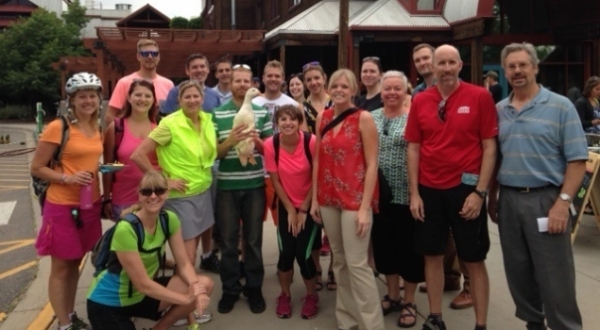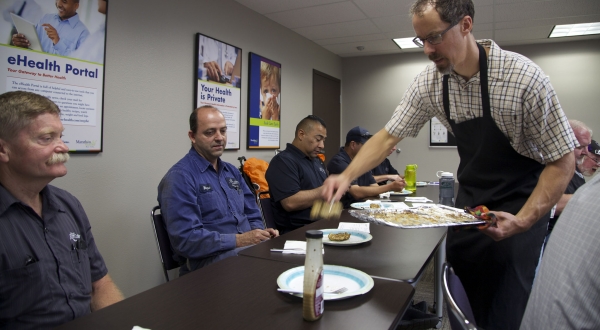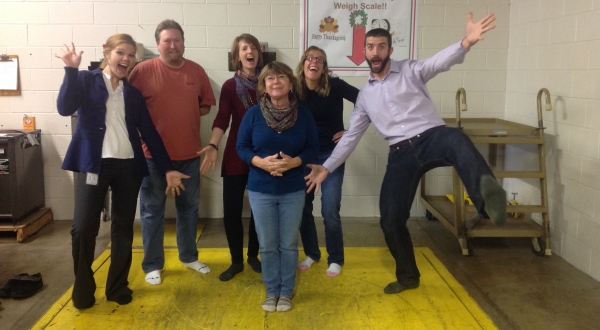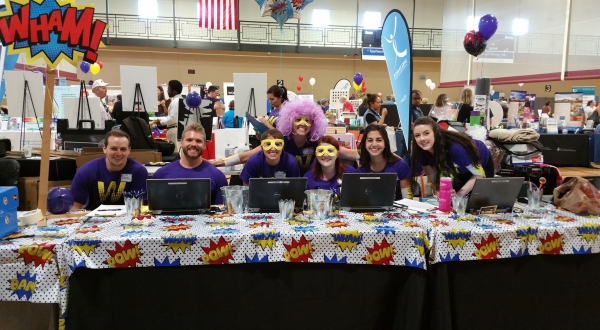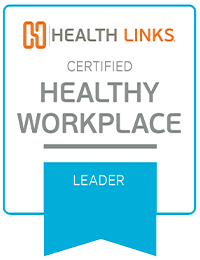
Health Links (HL): Why is the health and safety of your employees important to you?
City of Fort Collins (COFC): Our Wellness Team and our Safety Team have similar visions. Our Safety vision is “To be the safest workplace in America” and our Wellness vision is “To be the healthiest workplace in America”. We believe we can get there by providing the resources and tools to our employees to inspire them to lead healthy and safe lifestyles at home and at work. When our employees make healthy lifestyle choices, they ultimately become more engaged employees who drive our high performing organization to reach our City of Fort Collins vision, “To provide world-class municipal services through operational excellence and a culture of innovation”.
HL: What does your workplace health and safety program look like? Do you offer both components to employees?
COFC: Wellness is part of the Human Resources department and Safety is part of the Safety, Security and Risk Management department. We believe Wellness and Safety strongly support each other so we strive to collaborate between our two departments as much as possible. We collaborate by: holding a monthly Safety and Wellness Team meeting with our safety and wellness champions and hosting a retreat on a quarterly basis to plan and check-in as a larger team. At the City of Fort Collins, there is a clear link from the Wellness Program objectives to the organizational strategic objectives. An example of this is through one of the organizational priorities, “Create a safe and healthy workplace”.
A main component of our Wellness Program is our Well Days Program. We offer up to 3 days of vacation per year to employees who earn enough points and complete the mandatory components each trimester. Points are earned through activities (working out, riding your bike to meetings, gardening, getting a massage, attending safety meetings, attending the annual health fair, etc.), awareness (preventative screenings, fitness testing, health screenings, BP checks, ergonomic assessment, comprehensive health review at our on-site health clinic, etc.), and "Behaviorcation", a made up word for behavior change and education (being tobacco free, attending on-site wellness or safety training, setting goals with a PA in our on-site health clinic, etc.). Mandatory components of the Well Days Program include: pre-program survey, health risk assessment, blood pressure check, and the post-program survey. We also offer a number of services to our employees and their family members including an on site health and wellness clinic, on site fitness rooms and classes, fitness Testing, subsidized passes to our City Recreation Centers, flu shot clinics lifestyle reimbursement for massage, acupuncture, registered dietician services and bio-feedback, on and off-site wellness training (cooking, gardening, nutrition, self defense, etc), wellness book and video library, weight watchers reimbursement, on site mammograms and health screenings, ergonomic assessments, tobacco cessation reimbursement and more!
HL: How will you/do you know your Wellness program is successful?
COFC: There are a number of measures which show us the success level of our Wellness Program at the City of Fort Collins. Objectively we look at participation, average health claim costs per employee of those who participate in our Well Days Program vs those who do not participate in our Well Days Program (on average employees who participate in our Well Days Program have 37% lower health claims than those who do not participate in our Well Days program), pre and post program survey results, risk factors, and policy and environmental changes. We also subjectivly look at employee testimonials and stories, overall culture, and employee interactions. A new measure that shows the success of our Wellness program is that fact that our program is promoted when recruiting talent to the City of Fort Collins.
HL: What obstacles did you have to overcome to get your program started? How did you overcome them?
COFC: The City of Fort Collins hired its first Wellness Coordinator in the 90s to support one of our largest departments, Utilities. Since the 90s, the program has evolved into a City wide wellness program that supports all 2500 employees. Some of the obstacles that we have recently faced include maintaining a high-touch level of customer service with a growing and geographically spread out workforce, using effective marketing strategies to reach all 2500 employees, and engaging the employees who choose not to participate in our programing. We continually work to overcome these obstacles by improving the focus of our programming, by increasing our collaboration with our benefits, safety and marketing departments and by listening to suggestions our employees give us in our post-program surveys.
HL: Does your health and safety program help give back to your community?
COFC: The City of Fort Collins supports United Way efforts in Larimer County. We work with our on-site steering team to offer well-being related activities to help raise funding or to volunteer for United Way. For example, we offer Well Days points to employees who volunteer during the United Way “Make a difference day”, the steering team has a booth at our annual health fair, and we continually collaborate on creative and healthy ways to bring awareness to the annual United Way Campaign. Our wellness staff also collaborates with and supports various community health and wellness initiatives in our area.
HL: What tip/advice would you give to a business that is considering starting a workplace health and safety program?
COFC: Seek executive and leadership support. We have strong support from our City Manager all the way to our front line supervisors. That support has grown over the years and we’ve seen the positive effect it makes on the health and safety culture of our organization. Another tip is to look at your Wellness program as a program you do “with” your employees and not “to” your employees. Actively listening to your employees and utilizing their suggestions will help build support for the program. Employees who feel that their opinions and desires are valued will ultimately become stakeholders in your program, thus increasing the likelihood of success both in a business sense and culturally.
